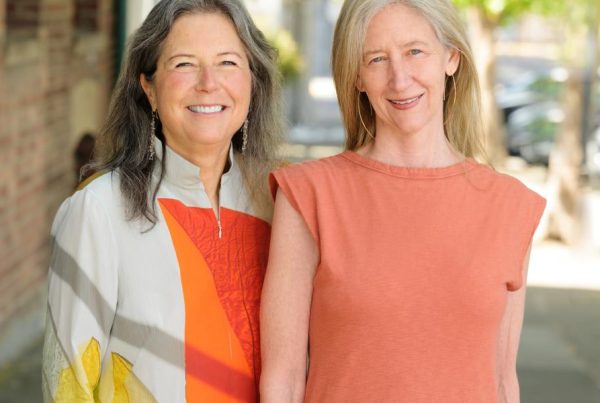This post was co-authored by Gregor U. Hayn-Leichsenring, Ph.D., Yoed N. Kenett, Ph.D., and Katharina Schulz
Why should anyone like a splatter of paint that doesn’t depict anything? On first pass, it makes no sense. Enjoying other kinds of art seems understandable. If you like people, portraits might appeal; if you like the outdoors, landscapes might engage; if you like objects, still-lives might attract. But, lines and colors strewn about in a meaningless manner?
Museums promote these paintings, experts extol their virtues, and collectors spend millions on them. How can we understand liking abstract paintings? One possibility is that our brains are attracted to certain visual patterns (Graham & Redies, 2010). Perhaps these patterns resemble spatial, luminance, and color regularities in the natural world and we evolved to be sensitive to these regularities. Abstract art might recapitulate these patterns without explicitly depicting anything concrete in the world.
This explanation gained some notoriety when Jackson Pollock’s abstract paintings were found to be characterized within a narrow range of fractal dimensions (Taylor, Micolich, & Jonas, 1999). Fractal dimension is a measure of self-similarity, meaning that similar patterns occur at different scales of an image. Fractal patterns are also found in nature, such as in coastlines and clouds and ferns and shells.
In line with this thinking, we tested the hypothesis that our brains prefer specific visual patterns in abstract paintings (Hayn-Leichsenring, Kenett, Schulz, & Chatterjee, 2020). We calculated statistical measures of self-similarity and complexity for 79 abstract paintings to see if these formal properties correlated with people’s preferences. Complexity refers to how much visual information an area of a visual image contains. In the first experiment of our study, we also included representational images including house facades, landscapes, and cars. In opposition to our hypothesis, complexity and self-similarity were not related to people’s preferences for abstract art. By contrast, people preferred less self-similar landscapes and more self-similar house facades.
We then had people write adjectives to describe the paintings. These descriptors were used to derive a theoretical network that represents the “space” occupied by these 79 abstract art paintings based on the similarity of how they are described. If two paintings were described using similar adjectives by many people, then these paintings lie closer to each other in the network space than if two paintings were described differently. This method provides us with a quantitative expression (degree of similarity across paintings) of qualitative reports (people’s descriptions). We found a correlation between the distance of a painting to other paintings in the network and to preference ratings of these images generated by a different group of participants. In other words, the more distinctive one painting is from other abstract paintings, based on the words used to describe them, the more people like it.
We derived a network of these abstract paintings using their statistical properties (again, self-similarity and complexity). Two paintings that are similar to each other in terms of self-similarity and complexity would lie closer to each other in the network. Again, we found no correlation between people’s preferences and the proximity of images within the network.
To summarize, people tended to prefer abstract paintings that are distinctive in how they are verbally described—but they are not influenced by distinctiveness in paintings’ formal visual properties. Our investigation revealed other nuanced findings. For example, paintings by Pollock, Rothko, and Mondrian—all titans of abstract painting—have quite different formal image properties. Maybe it doesn’t make sense to treat “abstract art” as a single category for formal analysis.
What do our findings mean and why are they surprising? We proposed that aesthetic experiences emerge out of a triad of large-scale systems: sensory-motor, emotion-reward, and meaning-semantic systems (Chatterjee & Vartanian, 2016). Abstract art has no representational content. The images do not refer to entities or events in the world and, as such, would seem to make little contact with meaning-semantic systems. As meaningless configurations of line, color, and form, it seems intuitively sensible that formal sensory properties of these images must be what informs the emotion-reward system tasked with evaluating a painting.
That intuition turns out to be wrong. Our findings are surprising because the words people used to describe the paintings—language that reflects higher cognitive processes and meaning-semantic systems—better predicted which paintings people liked than did the sensory properties of these paintings. What people choose to highlight in a painting, expressed by the words they use, is more closely related to their liking of seemingly meaningless artwork than the painting’s formal visual properties.
On another line of reasoning, the findings are perhaps not so surprising after all. One of the most robust observations in empirical aesthetics is that people who are naive to the arts do not like abstract paintings. If the preference for abstract art were driven by low-level visual machinery, then we would expect everybody who shares this machinery to like abstract art. Personal histories, educational background, and exposure to the arts probably direct our attention to elements of paintings that we choose to label. The fact that distinctiveness based on verbal descriptors links to the pleasure of abstract art exposes the role of meaning-semantics in affecting preferences even of displays that have no intrinsic meaning.
Source: Why Do People Enjoy Meaningless Splatters of Paint? | Psychology Today Canada













